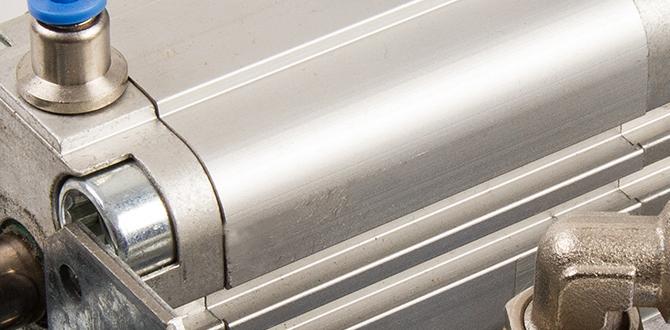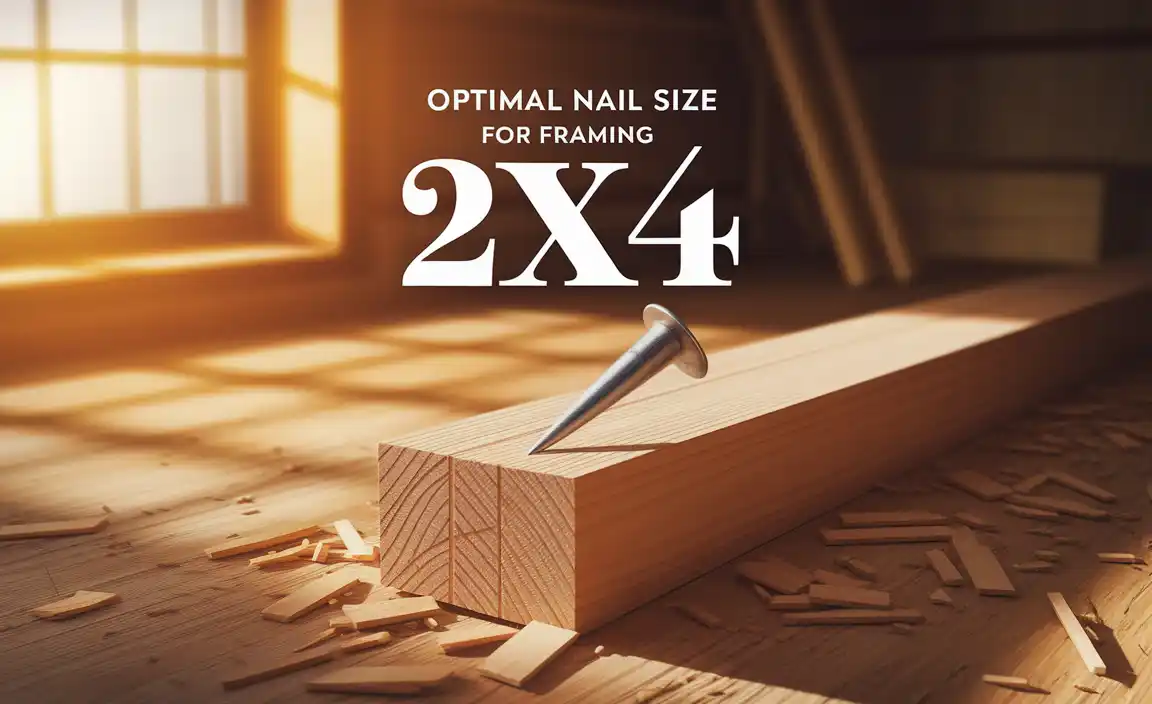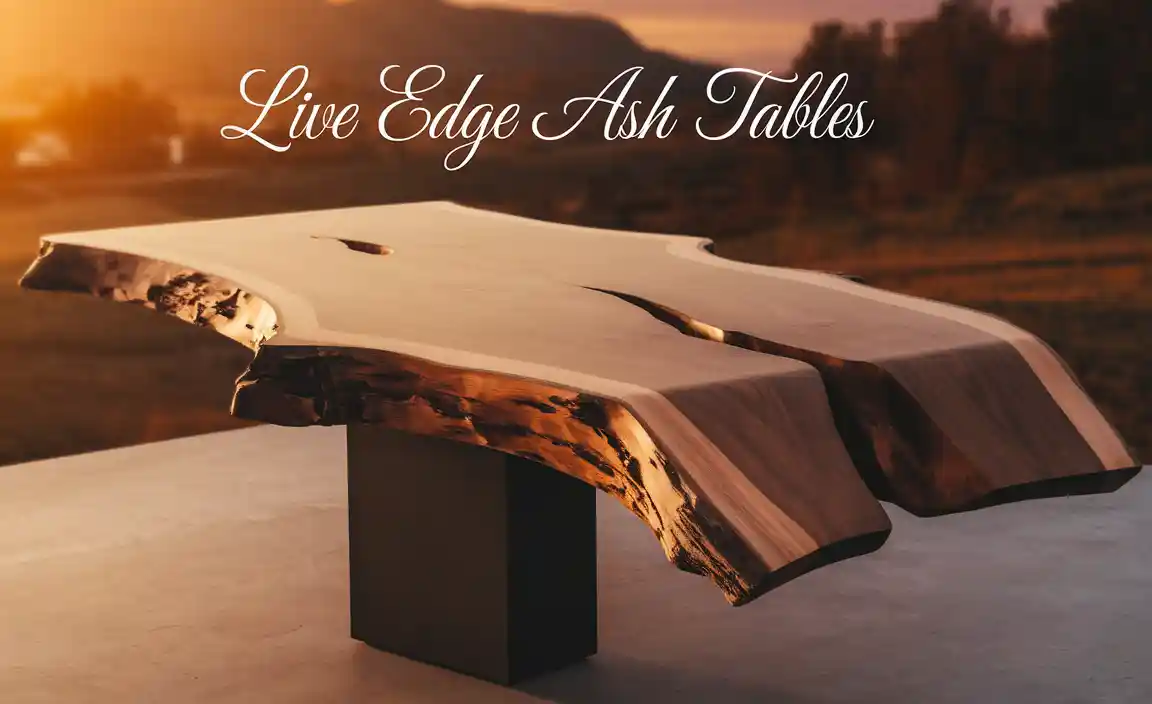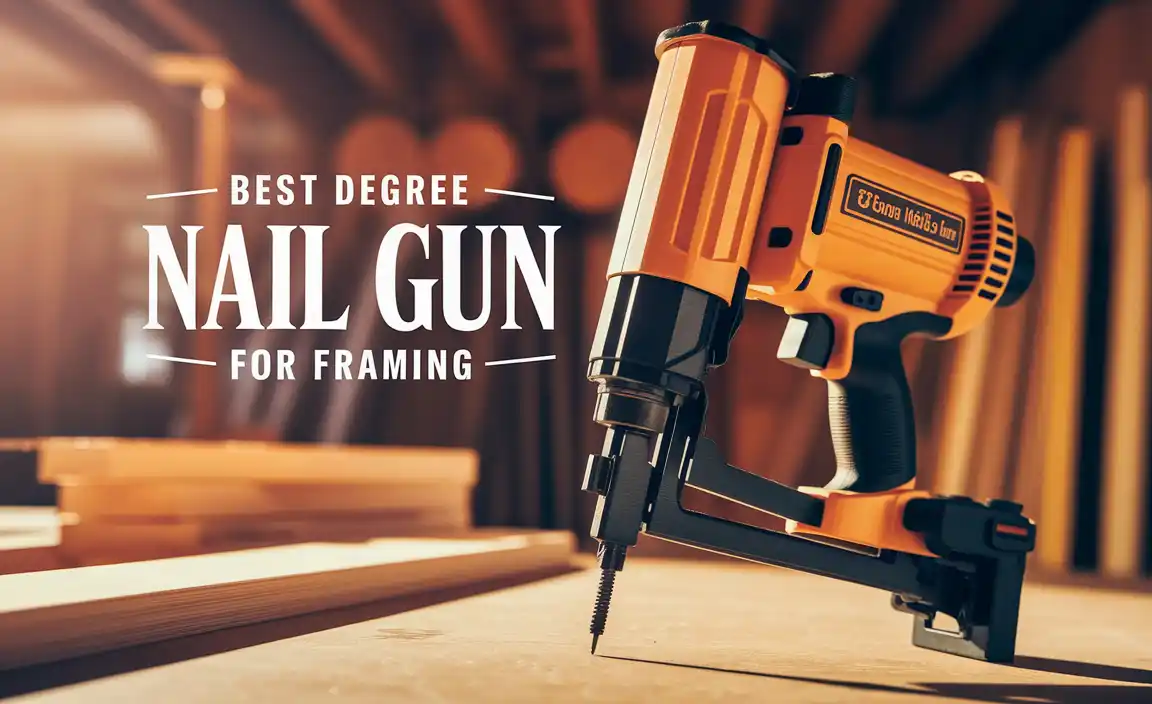For community workshops, choose simple, durable woodworking projects that are easy to build, require common tools, and offer a clear benefit to users, like benches, birdhouses, or tool organizers. Focus on safety, material cost, and beginner skill levels to ensure success and broad participation.
Welcome to the wonderful world of community woodworking! Ever wanted to build something awesome with your neighbors or friends, but felt a little unsure where to start? You’re not alone! Lots of folks find that setting up a community workshop or planning projects for one can seem a bit daunting. But don’t worry, I’m Jack Shaffer, and I’m here to help you nail it. We’ll break down how to pick fantastic projects that everyone can enjoy, learn from, and be proud of. This guide will give you the confidence to transform a shared space into a hub of creativity and craftsmanship.
Table of Contents
Why Community Workshops Need the Right Projects
Community workshops are special places. They aren’t just about tools and wood; they’re about bringing people together, sharing skills, and creating something tangible. The projects you choose really matter here. They need to be more than just fun; they need to be accessible to a range of skill levels, safe to build, and useful for the community itself.
Choosing projects that are too complex can leave beginners feeling discouraged. On the other hand, projects that are too simple might not hold the interest of more experienced woodworkers. The sweet spot is finding that balance – projects that teach new skills, build confidence, and result in something valuable for everyone.
Key Considerations for Community Workshop Projects
Before we dive into specific project ideas, let’s cover what makes a project a great fit for a community setting. It’s all about making things easy, safe, and rewarding.
Skill Level Accessibility
This is probably the most important factor for a community workshop. You’ll likely have everyone from absolute beginners to seasoned pros.
Beginner-Friendly: Projects should ideally involve straightforward cuts, simple joinery (like butt joints with screws or nails), and minimal complex techniques.
Scalable: Can a project be made simpler to accommodate beginners, or offered with more advanced options for those wanting a challenge?
Learning Opportunities: Even simple projects can teach fundamental skills like measuring, cutting accurately, and safe tool operation.
Safety First, Always!
In any woodworking environment, safety is paramount. For a community workshop, it’s even more critical because you have varying levels of experience and many people using the space.
Tool Familiarity: Projects should ideally utilize tools that are commonly found and that members are comfortable or can be trained on.
Small, Manageable Pieces: Working with smaller pieces of wood generally reduces risk compared to handling very large or heavy materials.
Clear Instructions: Detailed, easy-to-follow plans are essential, especially regarding safety precautions.
You can find excellent safety guidelines from organizations like the Occupational Safety and Health Administration (OSHA), which offers guidance on woodworking machinery safety.
Material Costs and Availability
Community workshops often operate on a budget. Choosing projects that are affordable to build is key to their long-term sustainability.
Common Lumber: Opt for readily available and inexpensive woods like pine, fir, or poplar.
Scrap Wood Friendly: Can projects utilize offcuts or reclaimed wood? This is great for sustainability and cost savings.
Hardware: Use common and affordable fasteners like screws, nails, and glue.
Practicality and Community Benefit
What do the projects do? Projects that serve a purpose for the workshop itself or the wider community are often the most satisfying and motivating.
Workshop Improvements: Building storage solutions or workbenches directly benefits the workshop.
Community Amenities: Outdoor furniture, garden beds, or signage can benefit local parks or community centers.
Usable Items: Birdhouses, simple decor, or organizers can be taken home and enjoyed.
Essential Tools for Community Workshop Projects
While you don’t need every tool imaginable, a community workshop should aim for a solid set of versatile tools that cover a range of basic woodworking tasks. Here’s a look at some essentials:
Measuring and Marking: Tape measures, carpenter’s pencils, combination squares, marking knives.
Cutting: Hand saws (crosscut and rip), miter boxes, a Jigsaw, a Circular Saw, and ideally a Miter Saw for more precise crosscuts. A table saw is a significant investment but incredibly useful if space and budget allow.
Joining and Assembly: Hammer, Screwdrivers (manual and powered), Cordless Drill/Driver, Clamps (bar clamps, pipe clamps, spring clamps), Nails, Screws, Wood Glue.
Shaping and Smoothing: Hand planes, Sandpaper (various grits), Sanding blocks, an Orbital Sander.
Safety Gear: Safety glasses, Hearing protection, Dust masks or respirators, and Work gloves.
| Tool Category | Essential Tools | Optional but Recommended |
| :——————- | :———————————————– | :—————————————– |
| Measuring/Marking | Tape Measure, Combination Square, Pencil | Marking Knife, Bevel Gauge, Calipers |
| Cutting | Hand Saw, Miter Box, Jigsaw, Circular Saw | Miter Saw, Table Saw, Bandsaw |
| Drilling | Cordless Drill/Driver | Drill Press, Spade Bits, Forstner Bits |
| Assembly | Hammer, Screwdrivers, Wood Glue, Assorted Clamps | Brad Nailer, Finish Nailer, Dowel Jig |
| Finishing/Sanding| Sandpaper (various grits), Sanding Block | Orbital Sander, Random Orbit Sander |
| Safety | Safety Glasses, Hearing Protection, Dust Mask | Respirator, Work Gloves, First-Aid Kit |
Top Woodworking Projects for Community Workshops
Now for the fun part! Here are some project ideas perfect for a community workshop, categorized by their general benefit or type.
1. Workshop Improvement Projects
These projects directly benefit the workshop space, making it more organized and functional for everyone.
a) Tool Organizers and Storage Cabinets
Why it’s great: Every workshop needs good storage. Building organizers for specific tools (like screwdrivers, wrenches, or even nailers) or a general-purpose cabinet keeps the workspace tidy and tools accessible.
Skills learned: Measuring, cutting multiple identical pieces, simple joinery (butt joints, sometimes dados), installing shelves or dividers, basic cabinet door construction.
Materials: Plywood, dimensional lumber (pine, fir), screws, hinges, drawer slides (optional).
Beginner-friendly tip: Start with a simple wall-mounted tool rack or a basic shelved cabinet. Avoid complex drawer systems until confidence grows.
b) Workbench Additions
Why it’s great: A sturdy workbench is the heart of any workshop. Adding features like a pegboard back, workbench drawers, or even a simple tool well can enhance its usability significantly.
Skills learned: Working with larger dimensions, securing sturdy components, integrating new elements into existing structures.
Materials: Plywood, dimensional lumber, screws, plywood or pegboard for the back.
Beginner-friendly tip: A simple pegboard back is an excellent first addition. It requires basic measuring, cutting, and screwing.
c) Sawhorse Sets
Why it’s great: Reliable sawhorses are essential for supporting lumber and project pieces during assembly and cutting. Building a set is a classic woodworking task.
Skills learned: Measuring and cutting angles, basic frame construction, understanding load-bearing structures. Many plans use simple lap joints or dado joints which teach precision.
Materials: Dimensional lumber (2x4s, 2x6s), screws or bolts.
Beginner-friendly tip: Many simple designs are available that use minimal angled cuts and basic assembly.
2. Outdoor and Garden Projects
These projects can benefit the local community or individuals by providing functional outdoor items.
a) Birdhouses and Feeders
Why it’s great: These are classic beginner projects. They are relatively small, use minimal materials, and have a charming outcome that benefits local wildlife.
Skills learned: Accurate cutting of small pieces, precise joinery, drilling holes for entry or perches, basic assembly with glue and fasteners. Understanding wood movement and exterior finishes can also be introduced.
Materials: Standard pine or cedar boards, screws or nails, exterior wood glue.
Beginner-friendly tip: Many free plans are available online, often with very simple shapes. Ensure drainage holes and easy cleaning access.
b) Raised Garden Beds
Why it’s great: These make gardening accessible for more people and can be a fantastic contribution to a community garden or to individuals’ homes.
Skills learned: Measuring and cutting lumber to length, creating strong corner joints (butt joints with screws or reinforced corners), leveling and positioning.
Materials: Rot-resistant lumber like cedar or redwood (if budget allows), or simply treated pine. Screws or lag bolts.
Beginner-friendly tip: A simple rectangular box design is very achievable. Focus on making the corners strong and ensuring the bed is square.
c) Outdoor Benches
Why it’s great: A sturdy, well-built bench can be a welcome addition to a park, a community garden, or even the workshop itself for breaks.
Skills learned: Measuring and cutting longer pieces accurately, strong joinery techniques (e.g., mortise and tenon, though simpler lap joints or even robust butt joints with bracing can work), fastening large components together. Safety is key here, ensuring the bench is stable and strong.
Materials: Dimensional lumber (2x4s, 2x6s), deck screws or lag bolts, exterior wood glue.
Beginner-friendly tip: Look for plans that use fewer complex cuts and emphasize robust, through-fastened joints. A simple plank-style bench is a good starting point. You can find excellent resources on building outdoor furniture safely from entomology experts like those at Michigan State University Extension, which also discusses wood types and finishes suitable for outdoor projects.
3. Practical Household and Decor Items
These projects create useful items that members can take home or use for community events.
a) Simple Shelving Units
Why it’s great: Shelves are always useful! Whether for home, garage, or even temporary displays for community events, shelves are a fundamental woodworking project.
Skills learned: Accurate measurement and cutting, creating square assemblies, fastening techniques, understanding load capacity.
Materials: Plywood, dimensional lumber, screws, shelf pins (optional).
Beginner-friendly tip: A basic “box” shelf or a unit with simple cleated supports is a great start.
b) Cutting Boards
Why it’s great: A handsome cutting board is a rewarding project that is practical and can make a great gift.
Skills learned: Glue-ups (edge-to-edge joining), milling lumber to a consistent thickness, cutting precise end grain, sanding to a smooth finish, applying food-safe finishes.
Materials: Hardwoods like maple, walnut, or cherry (ensure they are kiln-dried and suitable for food contact). Wood glue, food-safe mineral oil.
Beginner-friendly tip: While complex end-grain boards are advanced, simple edge-grain boards are very accessible. Focus on a good glue-up and careful sanding.
c) Tool Caddies or Carry Boxes
Why it’s great: Simple boxes with handles allow people to easily transport tools or supplies. They are functional and can be customized.
Skills learned: Creating a box from four sides and a bottom, cutting joinery for strength (like rabbets or half-laps, or just sturdy butt joints), adding a handle.
Materials: Plywood or dimensional lumber, screws, glue, a dowel or a simple wooden handle.
Beginner-friendly tip: A simple box construction with a reinforced bottom and glued/screwed joints is perfect. Add a dowel rod for a handle.
4. Educational Projects
These are designed to teach specific skills, often with a clear demonstration purpose.
a) Basic Wood Joints Demonstrators
Why it’s great: Create small sample pieces that clearly show different types of joints (e.g., butt joint, dado, rabbet, mortise and tenon, dovetail). These can be used in workshops to
teach new members.
Skills learned: Precision cutting, different types of cuts that define joinery, understanding how joints work.
Materials: Small pieces of scrap wood, glue.
Beginner-friendly tip: Start with the simplest joints and work up. Clear labeling is key.
b) Small Wooden Toys (with safety in mind)
Why it’s great: Simple wooden toys like blocks, pull toys, or basic cars can be made. This is great for family-oriented workshops or for creating items to donate.
Skills learned: Working with smaller dimensions, safety when cutting and sanding small parts, understanding paint/finish safety for children’s items.
Materials: Softwoods or hardwoods, child-safe paints and finishes, wooden dowels for axles.
Beginner-friendly tip: Focus on smooth edges, no small parts that can detach, and simple shapes. Always ensure any finish used is certified non-toxic. The ASTM F963 Standard Consumer Safety Specification for Toy Safety provides crucial guidelines for this.
Step-by-Step: Planning and Executing a Community Project
Let’s walk through how you might approach choosing and building a project for your community workshop. We’ll use the example of building simple birdhouses.
Step 1: Project Selection and Goal Setting
Discuss with the group: What do people want to build? What are the workshop’s current needs?
Evaluate ideas: Use the “Key Considerations” checklist (skill level, safety, cost, benefit). Birdhouses are low-cost, teach basic skills, and benefit wildlife.
Set objectives: We aim to build 10 birdhouses in one session for local park adoption.
Step 2: Plan Development and Material Sourcing
Find a simple plan: Search online for “easy birdhouse plans for beginners.” Look for clear diagrams and a material list. A plan with just a few straight cuts is ideal.
Create a materials list: Based on the plan, list out all the wood, screws, glue, and finishing supplies needed for the desired number of birdhouses.
Source materials: Purchase lumber (e.g., 1×6 pine boards) and fasteners. Consider buying in bulk if possible for cost savings. Check for local lumberyard discounts or donations.
Step 3: Tool and Safety Preparation
Gather necessary tools: Saws, measuring tapes, squares, drills, screwdrivers, clamps, sandpaper. Ensure you have enough for the number of people working.
Review safety procedures: Before anyone picks up a tool, conduct a safety briefing. Emphasize eye protection, how to use the saw safely, and proper clamping techniques. Having a designated safety officer can be helpful in a larger group.
Step 4: Cutting and Preparation
Marking and measuring: Each participant (or a designated cutter) marks the wood according to the plan. Accuracy here is important for a good fit.
Cutting: Make repetitive cuts for efficiency. For birdhouses, this means cutting the front, back, sides, floor, and roof pieces. Use a miter box and hand saw for straight cuts, or a miter saw if available and members are trained.
Drilling: Drill the entrance hole, drainage holes in the floor, and pilot holes for screws to prevent wood splitting.
Step 5: Assembly
Joinery: Start with the floor and sides. Apply wood glue to the edges and then secure with screws. A good tip is to clamp pieces together while the glue sets and screws are driven.
Adding the front and back: Glue and screw these in place.
Attaching the roof: Ensure the roof pieces overhang slightly to protect from rain.
Step 6: Finishing and Final Touches
Sanding: Smooth all edges and surfaces to remove splinters. This is crucial for safety and aesthetics.
Finishing (Optional but recommended): Apply a non-toxic, exterior-grade wood sealer or paint to protect the birdhouse from the elements. Avoid painting the interior or around the entrance hole.
Inspection: Do a final check of all joints and ensure there are no sharp edges or protruding screws.
Congratulations! You’ve built birdhouses. This process can be applied to any project, scaling up or down the complexity as needed.
Sample Project Plan: The “Community Organizer Shelf”
Let’s consider a slightly more involved project that directly benefits the workshop: a simple, modular shelving unit.
Project Goal: To build a versatile shelf unit that can hold materials, tools, or finished projects.
Skill Level: Beginner to Intermediate. Introduces basic joinery and assembly of multiple components.
Estimated Time: 4-6 hours (depending on group size and experience).
Materials:
(4) pieces of ¾” plywood, 12” x 36” (for shelves)
(4) pieces of ¾” plywood, 10” x 36” (for sides)
(1) piece of ½” or ¾” plywood, 36” x 36” (for back panel – optional)
Wood screws (1 ¼” and 2”)
Wood glue
Sandpaper (120 and 220 grit)
Optional: Wood finish (polyurethane, stain, paint)
Tools:
Tape Measure
Pencil
Carpenter’s Square
Circular Saw or Table Saw (for cutting plywood to size)
Drill/Driver with bits
Clamps (bar clamps or pipe clamps)
Orbital Sander
Safety Glasses, Hearing Protection, Dust Mask
Cutting Diagram (Conceptual):
Imagine your 36” wide material. You’ll cut it into these lengths.
Side panels: 10” tall x 36” wide (x4)
Shelf panels: 12” deep x 36” wide (x4)
Back panel (optional): 36” tall x 36” wide (x1)
Assembly Steps:
1. Cut Materials: Safely cut all plywood pieces to the specified dimensions. Ensure edges are clean.
2. Mark Shelf Placement: On the inside face of each side panel, measure and mark lines where each shelf will attach. A common spacing might be 10-12 inches apart, leaving a bit of space at the top and bottom. Use a square to ensure your lines are perfectly perpendicular to the edges.
3. Attach First Shelf: Apply wood glue to the edge of one shelf that will meet a side panel. Place the side panel onto the shelf, aligning the bottom edges and the marked line for the shelf. Clamp securely. Drill pilot holes through the side panel into the shelf, then drive screws.
4. Attach Second Side: Flip the assembly over. Apply glue to the other end of the shelf. Attach the second side panel, ensuring it’s square and aligned. Clamp, drill pilot holes, and screw. You now have the first “rung” of your shelf.
5. Continue Adding Shelves: Repeat steps 3 and 4 for each additional shelf, working your way up the unit. Ensure each shelf is level and securely attached.
6. Attach Back Panel (Optional): If using a back panel for added stability, apply glue to the back edges of the shelves and sides. Position the back panel and secure it with screws all around. This is highly recommended for stability, especially if the unit will hold heavy items.
7. Sanding: Once the glue is dry, sand all surfaces and edges. Start with 120-grit sandpaper to smooth out any rough spots or pencil marks. Follow up with 220-grit for a smooth finish. Ease sharp edges.
8. Finishing: If desired, apply your chosen finish according to the product instructions. Allow adequate drying time.
This “Community Organizer Shelf” is a fantastic project because it’s scalable – you can make them taller, shorter, wider, or narrower. Plus, they’re incredibly functional for any workshop.
Frequently Asked Questions (FAQ)
Q1: What’s the easiest woodworking project for a complete beginner in a community workshop?
A1: Simple birdhouses, basic tool racks, or a small planter box are excellent starting points. They involve straightforward cuts and assembly, helping build initial confidence without complex joinery.
Q2: How much lumber should we buy for a project in a community workshop?
A2: Always add about 10-15% extra to your material list. This accounts for cutting errors, mistakes, or potential wood defects. It’s better to have a little extra than run out.
Q3: What safety gear is absolutely essential for woodworking projects?
A3: Safety glasses are non-negotiable to protect your eyes. Hearing protection (earplugs or muffs) is vital when using power tools. A dust mask or respirator is important for sanding and cutting to protect your lungs from fine wood dust.
Q4: Can community workshop projects use reclaimed or scrap wood?
A4: Absolutely! Reclaimed wood projects are a fantastic way to be sustainable and cost-effective. However, ensure the wood is free of nails, screws, and paint, and assess its stability and structural integrity before use.
Q5: How do we ensure projects are usable by people with different physical abilities in a community workshop?
A5: Consider projects that require varying degrees of physical exertion. For items like benches or garden beds, think about different heights or easier access. Offering modifications in plans can help tailor projects to individual needs.
Q6: What’s the best way to teach new members basic woodworking skills?
A6: Start with hands-on, simple projects. Provide clear, step-by-step instructions, demonstrate each step, and supervise closely. Encourage questions and foster a supportive learning environment. Focus on one or two key skills per project.
Q7: How can we make our community workshop projects more environmentally friendly?
A7: Opt for sustainable wood sources, minimize waste by planning cuts carefully and using offcuts, choose low-VOC finishes, and consider projects that have a positive environmental impact, like birdhouses or pollinator gardens.
Conclusion
Building woodworking projects for community workshops is a rewarding endeavor. It’s about more than just the finished product; it’s about cooperation, skill-sharing, and creating something valuable together. By focusing on projects that are accessible in skill level, safe to build, cost-effective, and beneficial to the community, you can foster a vibrant and productive workshop environment.
Remember, every master woodworker started as a beginner. The key is to choose the right projects, emphasize safety and clear instruction, and create a supportive atmosphere where everyone feels encouraged to learn and contribute. Whether you’re building birdhouses for a local park, organizers for your shared space, or benches for a community garden, the shared experience and tangible results will be incredibly fulfilling. So, gather your team, choose your next project, and let the sawdust fly! You’ve got this.



